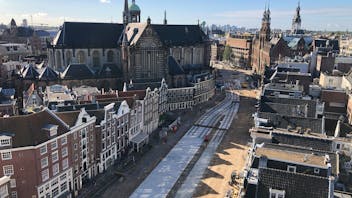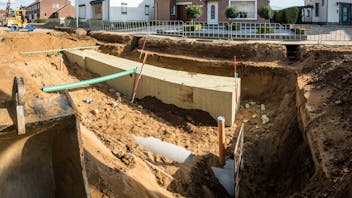How do you install a Rockflow linear infiltration system?
The installation of the Rockflow® linear infiltration system takes place in phases: This means that the work can be carried out per section of the road. This minimizes any inconvenience for local residents. These are the steps:
- Breaking up and removing the first part of the paving and road foundation.
- Excavating the trench.
- Installation of the foul water sewer and the Rockflow® infiltration package (this requires a crane with a pallet fork).
- Connecting the system to gullys and rainwater downpipes.
- Replenishing and compacting the sand around the pipe package.
- Supply of sand and foundation material.
- Applying the pavement / asphalt.
While the work on the first section of the road is being completed, the excavation of the next section can already begin. ROCKWOOL ensures just-in-time delivery of the Rockflow elements to the construction site so that the work can be completed as efficiently as possible.












